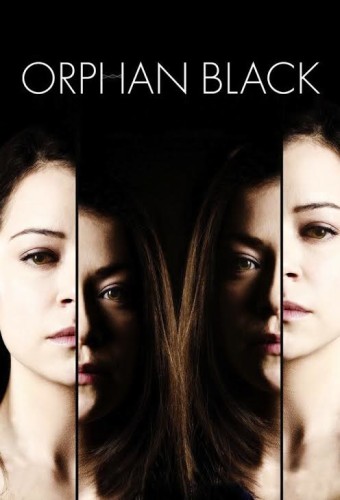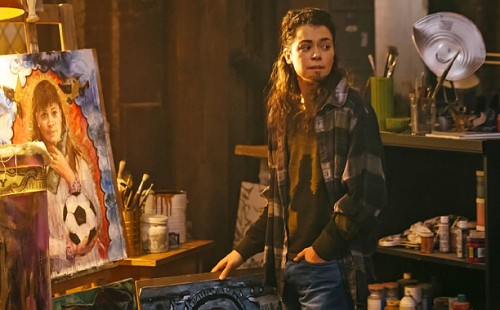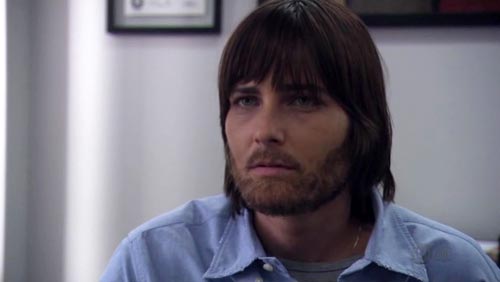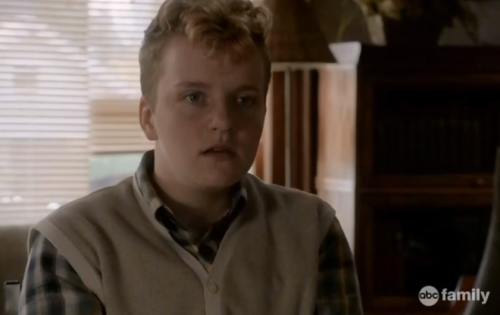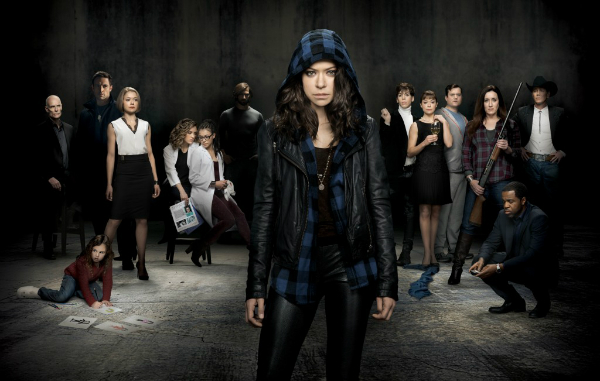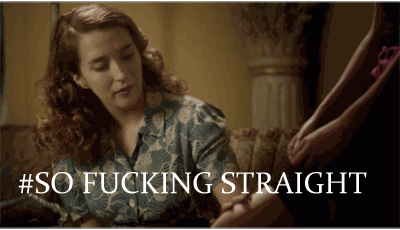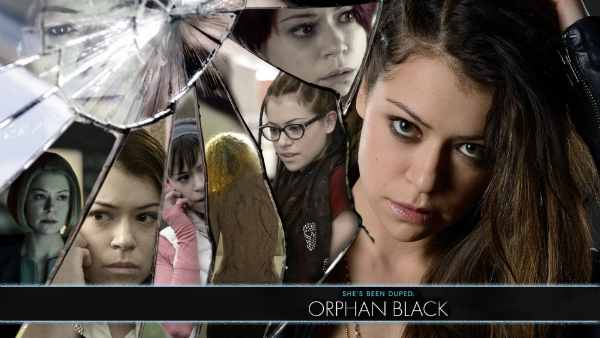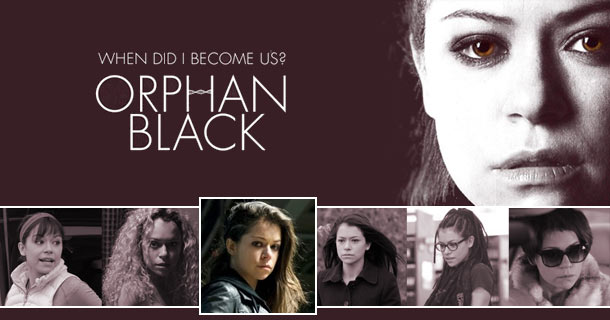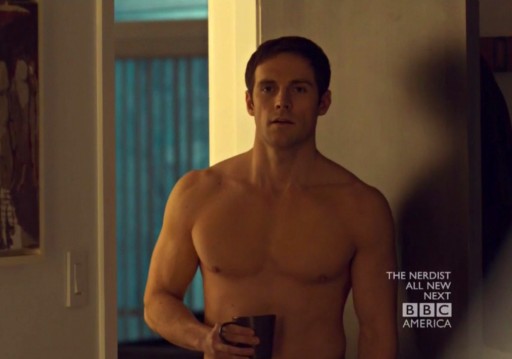
This guest post written by Amy C. Chambers originally appeared at The Science and Entertainment Laboratory and an edited version appears here as part of our theme week on Women Scientists. It is cross-posted with permission.
I am a self-proclaimed Orphan Black geek monkey and I am obsessed with Clone Club (and their marvelous dance parties). When I first started to explore the representation of women in science in entertainment media I wrote a blog post on the subject to help organize my thoughts on how and where women working in STEM (science, technology, engineering and mathematics) were represented. I got a great response from people who read the article and received lots of tweets about the mysterious Cosima Niehaus. After a quick google I binge-watched the first two seasons of Orphan Black (an almost entirely female-led science-based series) and excitedly watching seasons three on four on TV.
I have now discovered that Cosima is an evolutionary biologist (the geek-monkey) who is one of the show’s main characters; part of a cast of clones (#CloneClub) all played by the mesmerizing Tatiana Maslany. Cosima is named after Orphan Black’s own science advisor Cosima Herter (one of the few women acting as a science consultant in mainstream film/TV) who is a science writer interested “in the ethics, philosophy, and history of biology, especially cloning, evolutionary theory, and genetic engineering.” In Orphan Black, Cosima is both an active scientist who helps to drive the plot and explain much of the series’ scientific complexities, and a science experiment as part of a convoluted conspiracy plot surrounding the Dyad Institute, the Neolutionists, the Proletheans, and Topside, amongst many others. It is a narratively dense series, but at its core it is fixated upon science and women — something that I discovered was severely lacking in the mother / daughter / lover women I found on the silver screen.

I am restricting my examples to TV series released after 2000 and I chose to split discussions of film and television because there is a disparity between the number of women scientists in mainstream Hollywood movies, and the volume of women present in television shows. Some of this is due to the fact that there are far more TV programs made than films, and that the production process is very different with the option for pilot-episodes (to test out potentially unprofitable female characters…), early cancellations (in the U.S. context), and long-running shows such as FOX’s Bones that provide the opportunity for existing female characters to be developed and for new ones to be introduced.
Bones is led by Dr Temperance “Bones” Brennan with a comparatively substantial list of female co-stars in scientific professions (in the main cast the gender split is 50:50). The women are not outnumbered, the women have conversations about things other than men, and they are not ‘damsels in distress’ – they fight their own battles and wield their own firearms. The series passes both the Smurfette test and the Bechdel test. However, Bones does not comment on the very real issue of sexism in the hard sciences but it, in part, helps to address the problem by making women, from a variety of different backgrounds, scientific role models for its viewers.

Women make up between 60-65% of the US TV viewership but, as noted in a 2013 study by the Geena Davis Institute on Gender in Media, only 38.9% of characters in prime-time programs are women, and only 22% of prime-time programs feature women in half of all speaking parts. Science-based television series seem to fair better with women taking some significant roles within their respective shows. There are some brilliant examples of women in STEM on the small screen for example: Astrid Farnsworth (Jasica Nicole) and Nina Sharp (Blair Brown) from Fringe; Abby Sciuto (Pauley Perrette) from NCIS; Virginia Johnson (Lizzy Caplan) from Masters of Sex; Nikki Alexander (Emilia Fox), Clarissa Mullery (Liz Carr), and Sam Ryan (Amanda Burton) from the UK’s Silent Witness; Jemma Simmons (Elizabeth Henstridge), and Daisy ‘Skye’ Johnson (Chloe Bennet) from Agents of S.H.I.E.L.D.; Alison Carter (Salli Richardson-Whitfield) from Eureka; Samantha Carter (Amanda Tapping) – from Stargate: SG1, Stargate Universe, and Stargate: Atlantis. Where I struggled to build a long post-2000 list of women of science in cinema in a couple of hours I managed to amass a list of more than fifty women of STEM on mainstream shows with a mix of science fiction and science-based/medical dramas. I also included mechanical engineers Kaylee Frye (Jewel Staite) from Firefly, The 100’s Raven Reyes (Lindsey Morgan), and Scorpion’s Happy Quinn (Jadyn Wong). Yet despite these good examples, women still pale in comparison to their male counterparts who are often the lead characters.

“Both young girls and boys should see female decision-makers, political leaders, managers, and scientists as the norm, not the exception. By increasing the number and diversity of female leaders and role models on screen, content creators may affect the ambitions and career aspirations of girls and young women domestically and internationally. As Geena Davis frequently states: ‘If she can see it, she can be it.’” —Gender Roles & Occupations: A Look at Character Attributes and Job-Related Aspirations in Film and Television
It is important to have women represented in fictional media as scientists from across the spectrum of sciences, not just biological and medical sciences. Although I did not struggle to create a post-2000 TV list of women with science-based professions, I did find that a higher percent of the women I found were working in the biosciences including all the female medics on House, Body of Proof, CSI, Rizzoli & Isles, The Strain. Finding women represented in the hard sciences was more of a challenge – in The Big Bang Theory for example, of the female scientists that are series regulars Amy Farrah Fowler (Mayim Bialik) and Bernadette Rostenkowski-Wolowitz (Melissa Rauch), one is a neurologist and the other is microbiologist. They are repeatedly shown to be academically brilliant and their scientific prowess adds to their characterization but they are both bioscientists – the hard physical sciences are almost entirely left to the men. Earlier in the series, there was the wonderful Leslie Winkle (Sara Gilbert) who was a physicist who was able to hold her own and often exceed the achievements of the boys – but she was not retained as a series regular.

I had to search through several of the The Big Bang Theory seasons to find a second example of a woman outside of the biosciences and medicine: Elizabeth Plimpton (Judy Greer), cosmological physicist, appears in one episode – “The Plimpton Stimulation” in season 3 – but her academic prowess is soon undermined by the character’s voracious sexual appetite. Other women include Leonard’s (Johnny Galecki) mother, psychologist Beverly Hofstadter (Christine Baranski); Leonard’s ex, Stephanie Barnett, MD (Sara Rue); and Raj’s (Kunal Nayyar) girlfriend, dermatologist Emily Sweeney (Laura Spencer, who also plays intern Jessica Warren on Bones). Rashel Li and Lindy A. Orthia conducted a study on viewer responses to scientific ability and gender balance/imbalance on The Big Bang Theory. Many participants were irritated by the gender-based stereotypes of men in physics and women in biology but conceded that all scientist characters were shown to be equally scientifically capable despite their restriction to particular fields.
![Big Bang Theory | Penny [surname unknown] (Kaley Cuoco) with the rest of the cast – the season one Smurfette The Big Bang Theory](https://www.btchflcks.com/wp-content/uploads/2016/07/Big-Bang-Theory-3.jpg)
This made me think about how the female characters are incorporated into The Big Bang Theory. When the sitcom began in 2007 there was only Penny (she had no last name until recently, when she married one of the male scientists and took his name, don’t even get me started on that) a supposedly ditzy actress/food server played by Kaley Cuoco to provide gender “balance.” But over its nine seasons, the show has evolved from being a tired trope of “nerdy male scientists can’t get a dates” to a show with developed female characters who are more than romantic accessories or weak comedic stereotypes. The show has been praised for its realistic representation of bench science, but up until its fourth season it failed to show professional women in STEM settings unless they were administrators, assistants, or students. Amy and Bernadette start off as the oddball lady-Sheldon and the squeaky-voiced vertically-challenged blonde – but these initially problematic characters develop to show the real-world issues faced by professional women who struggle with not being taken seriously because they are women who don’t reject their femininity. They are not the stereotypical representations of STEM women as described by Jocelyn Steinke in her study of female scientist representation in movies 1991-2001, and they are not simply sci-candy brought in to solve problems for the male leads. The women of The Big Bang Theory are now given screen-time without the male characters and Amy, Bernadette, and Penny (who left waiting tables to forge a career in pharmaceutical sales) have their own lives to discuss beyond their romantic entanglements. The show still needs to work on its representation of gender (and race) in STEM, but it remains one of the most realistic representations of real science on television, and may inspire some women to pursue a career in the sciences.

“In recent years the so called ‘fourth wave’ activists and organisations have been making great strides in bringing feminism back up the social and political agenda. Groups like the Everyday Sexism Project, No More Page Three, the Women of the World festival (WOW) and the Women on Bank Notes campaign have all contributed to widening understanding of our social inequalities. This is the wider context within which we can begin to address the inequalities in STEM.
We call on TV and other media to use the gender lens when casting new characters in widely viewed programmes, commissioning new series that challenge gender stereotypes, and to both train and use female experts.” – Science Grrl, THROUGH BOTH EYES: The case for a gender lens in STEM
Media producers need to think more actively about incorporating female characters into their science-based TV series; they should, as recommended by a report produced by Science Grrl (quoted above), use a gender lens when commissioning new shows. They need to work towards producing shows that “challenge gender stereotypes” – women should not be an afterthought or a late addition; they should be part of the initial design of the program. A huge majority of science-based television programs and films have science consultants who advise on science content and science-based storylines to make them more believable and entertaining. It is important to have scientists involved in a production at an early stage as collaborators to allow for a more organic incorporation of scientific principles and more accurate representations of the systems of science (laboratories, experiments, results). This should also be applied to the incorporation of women in STEM – as part of my developing research I want to analyze the incorporation of women into science-based shows and ask how improving the involvement of women (as science advisors, writers, directors, etc.) could genuinely improve and diversify the representation of scientists.
The film and television industry is still an extremely male dominated field. “In 2013-14, women comprised 27% of all individuals working as creators, directors, writers, producers, executive producers, editors, and directors of photography,” according to “Boxed In Report,” commissioned by Center for the Study of Women in Television and Film. For me, the most important media recommendation made by the Science Grrl report is the idea that women need to be incorporated into the process early and that media producers should even be involved in training women scientists to be active contributors. Science consultants are an increasingly important part of producing exciting and entertaining science-based TV and film. Dr. Kevin R. Grazier, the science advisor for Battlestar Galactica, Defiance, Falling Skies, and the movie Gravity spoke at an event I was involved with about his involvement in the these projects from the beginning – science was a core element of their creation. Science-based narratives are informed by the science-based worlds created by both the creative teams and their science advisors.

The experience of female scientists is an important thing to be presenting on-screen not only for young women but also for young men who can have the idea of seeing women of STEM on their screens normalized. By involving women in STEM as advisors and collaborators, the representation of women can move from being token figures and anomalies to being regular and entirely expected leading figures in science-based narratives on either the big or the small screen. By making women more visible in science settings on television – in both fictional and factual programming – the inspiring images of science that can and are being produced can be associated with women who are not only represented as smart individuals but as part of a network of diverse and complex professional women.

Women don’t need to be told that science can be girly, and they don’t need to be given pretty role models to show them the way into science; but they do need to be shown that science is for everyone.
Amy C. Chambers is a postdoctoral researcher at Newcastle University in the UK researching the intersection of science and entertainment media. Her newest project explores the representation and the projected futures of women within scientific cultures in science fiction. She blogs about her research and interests at the Science and Entertainment Laboratory and The Unsettling Scientific Stories Project, and you can follow her on Twitter at @AmyCChambers.
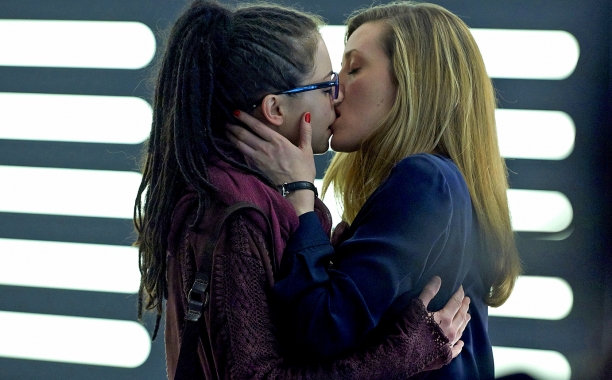







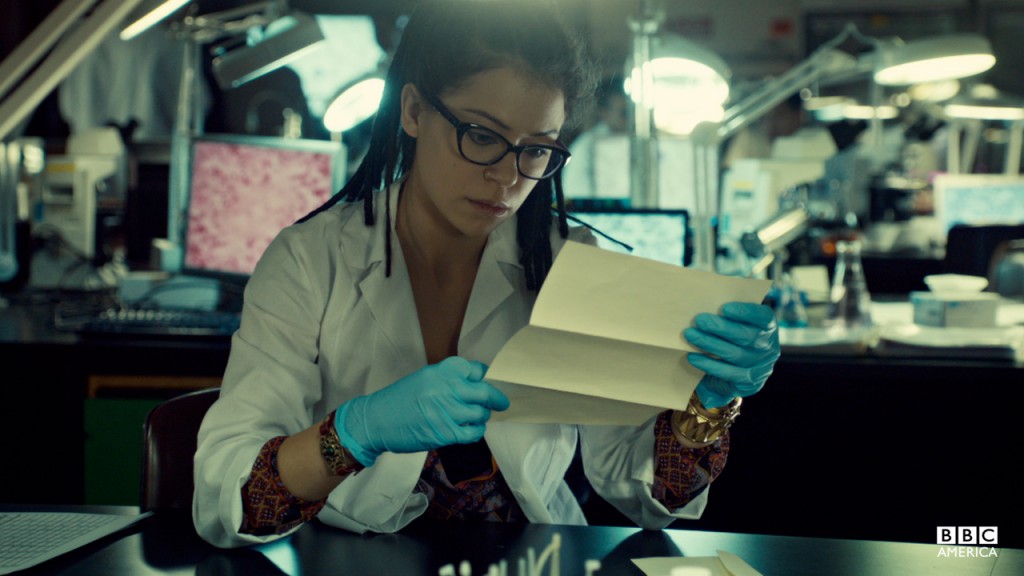





![Big Bang Theory | Penny [surname unknown] (Kaley Cuoco) with the rest of the cast – the season one Smurfette The Big Bang Theory](https://www.btchflcks.com/wp-content/uploads/2016/07/Big-Bang-Theory-3.jpg)


